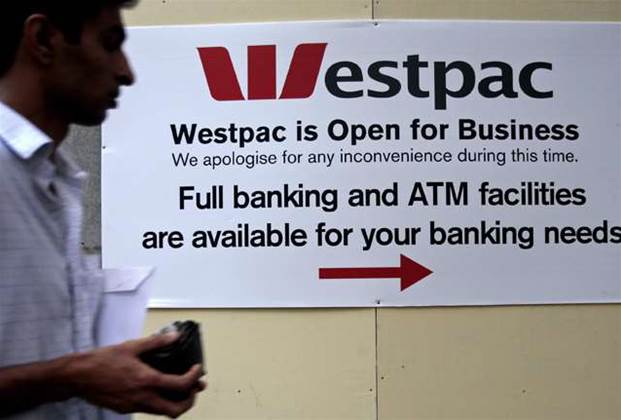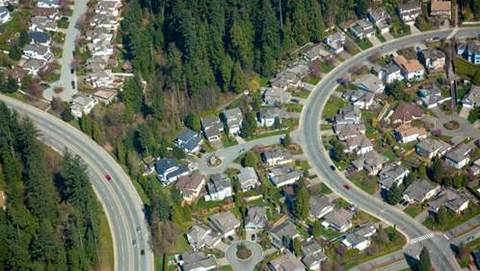Over the next few years, Westpac will undertake a radical transformation of its IT environment that will see it rebuild its operations from the middle out.

Underpinning this future state is a customer service hub, which will link up all the data trapped in Westpac’s product and customer-facing systems into one central location.
Banks traditionally structure their operations around products and channels: it’s how they sell, and therefore has long been the way their core technology has been framed.
But in Westpac’s new pursuit to become “one of the world’s great service companies”, it quickly realised it couldn’t get there without rethinking its product-based approach.
Enter CIO Dave Curran’s vision for a single application that interacts with every system across the group to pull out and centralise the disparate business logic that has crept its way into various platforms across the bank’s many years of operations.
The platform, what Westpac is calling a customer service hub, would allow, for example, a customer who started a conversation with a call centre staffer, if interrupted, to continue that same conversation seamlessly across any of Westpac’s other customer service channels.
The hub will be underpinned by the Oracle customer master Westpac has used for years in its Fiserv-online banking front end.
The bank has long been expected to sign a deal with Oracle to extend its use of the company’s Customer Hub data integration solution: Curran first signalled the intention in 2014 after joining the bank.
Westpac has additionally signed up to use Oracle’s Banking Platform as part of its hub architecture.
Initially the deal only involves the platform’s origination and servicing modules, but could extend over time to other areas should Westpac decide it necessary to replace any of its older systems with Oracle banking modules.
Moving origination - the process individuals go through to apply for loans - out of the product system it lives in means a customer would experience the same origination platform for their credit card as they do for their home loan.
Now, with the Oracle deal sewn up, Curran and team can start implementing the technology in earnest, and linking up all Westpac’s major systems into the central customer identifier.
Despite being arguably the easiest technologically, they won’t start first with the St George core banking platform they successfully upgraded from Hogan to the newer Celeriti in August.
The Celeriti upgrade was years in the making, and is the biggest update St George has done since the 1990s (Hogan went in in the 80s).
Teams worked across four continents on the 100 different applications the platform is interfaced to. The upgrade involved 25,000 tests and structures.
The upgrade was also used to determine whether Westpac could also bring its own legacy core banking platform for deposits and transaction accounts - a homegrown system dubbed Trading Bank - onto the Celeriti technology.
While the bank has subsequently decided to shift Trading Bank to Celeriti, when is currently unclear; Curran argues the timeline is effectively irrelevant.
Taking its time
The implementation of the customer service hub means Westpac doesn’t have to be in a rush to upgrade old systems in order to get to the central customer view the bank is chasing, Curran said.
“If you’ve got Celeriti and Trading Bank sitting under the customer service hub, then that’s what’s driving the customer conversation, and I can isolate that from my strategic plan,” he said.
“And then on a case by case basis I can determine what I’m going to do with my product systems. Whereas if you do a core banking platform you’re all in from the start.”
Instead, Curran and co can extract the layer of customer logic sitting on top of most of the bank’s product systems and shift it into the customer service hub, leaving the worry of upgrades or replacements until later.
“I’m making the hub the master and the product systems the slave,” he said.
“If I can see everything about you I can not only look after your product account set, but I can also serve you in the channels better, and I can start thinking about pricing for you, not pricing based on the products you buy.”
The first stage of the customer service hub project is home ownership, one of the biggest parts of the Westpac business.
It’s a strategic, rather than technical, decision, Curran said: the bank’s “greatest need” is to make its home ownership offering the best it can be in the marketplace.
“The approach is firstly: how can we get the best solutions to our customers quicker? Then, what’s the most broken? And thirdly, technical constraints - things that may not have all the functionality you need,” Curran said.
His team started work on the integration for home ownership around six months ago. This component of the project is expected to take a total of three to four years.
“The challenging part of this is not building or implementing this. It’s integrating with it. And when you get into transaction banking it gets even more difficult because of all the things it’s hooked into," Curran said.
“How you build and test something is easy. How you build and test something for all the things that don’t work is the difficult part. The more complicated your ecosystem is, the more challenging it is to prove all the conditions work in the exception cases.
“That’s why this phase of the program is so important.”
Once that massive task is complete - the home ownership integration will touch at least two-thirds of systems across Westpac’s retail and commercial bank - the bank will have a framework in place for how it tackles its other verticals.
However, what will follow in stages two and three is yet to be determined, Curran said.
The program is being split up into three main channels: lending, deposits and transactions, and credit card. At the moment deposits and transaction accounts are tentatively slated to be next.
"We’ll work that out over the next 12 to 18 months. I’m not rushing this,” he said.



_(22).jpg&h=140&w=231&c=1&s=0)





_(26).jpg&w=100&c=1&s=0)

 iTnews Executive Retreat - Security Leaders Edition
iTnews Executive Retreat - Security Leaders Edition











_(1).jpg&h=140&w=231&c=1&s=0)



